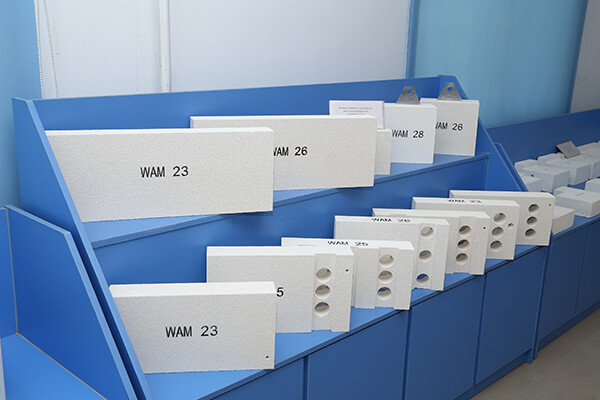The Best Solution For Energy Saving And Reducing CO2 Emission
The Best Solution For Energy Saving And Reducing CO2 Emission
 Tel: +86-532-85717690/85717352/85832089
Tel: +86-532-85717690/85717352/85832089 E-mail: wam@wamcn.net
E-mail: wam@wamcn.net
High temperature insulating brick are specially engineered bricks used in various construction project.
After the manufacture of these insulating brick, they are usually put under a rigorous methods of testing to ensure that they are strong enough for their intended use.
The Aim of Testing High Temperature Insulating Bricks
Checking the production process is the major reason for testing high temperature insulating bricks.
It is to work on faults that are found to ensure that the product is saleable. It is also to guarantee performance and quality of the marketed bricks.
Bricks must be able to resist local weather conditions and they should not contain materials that will damage them or applied finishes such as plaster, paint or renderings, this is because they are used in housing construction.
Their strength must be enough to withstand the dead load of the building and live load like occupancy as well.
Also, in order not to build up unduly large stresses, the thermal movements must not be so large.
Therefore, testing should involve ensuring that bricks have all the features required for effective use in building.
It is also important for you to order your high temperature insulating bricks from an efficient, reliable and experienced manufacturer.

1. Preliminary quality checks
By striking two hand-held bricks, you can do a quick check of quality. A ring that is high-noted indicates that they have been fired thoroughly.
A dull sound however, indicates either a soft-fired material or a cracked material. In the same way, bricks that cannot be scratched and rubbed away with a coin’s edge are actually hard and definitely of good quality.
Although bricks without a good ring may still be perfect for various construction purposes, as these tests are only applied to determine some of the best materials.
The general appearance of a brick might just give off a quick indication of quality. Regular shapes and sizes, unblemished surfaces and freedom from cracks are all indications of good bricks.
Even though colour is quite difficult to interpret, within a batch of bricks from any brickworks the darker colours are most likely to be of the harder fired, durable and stronger bricks.
2. Resistance to Erosion
Dampness and flowing water can be causes of severe building deterioration. Unfired earth bricks are slaked or eroded by water.
Meanwhile, firing makes bricks develop excellent resistance to water erosion.
Testing of resistance to erosion by water involves the soaking the brick samples in water for 24 hours, good bricks will show no sign of softening or slaking.
Another test which is more severe, involves spraying water on bricks for several weeks.
This will allow for the separation of bricks into different quality groups, because low quality bricks get eroded but high quality bricks stand unaffected.
3. Rain Penetration
Usually, moderately high absorption of water is acceptable in a brick wall as rain water dries out once there is good weather conditions.
However, in some other circumstances, rain running on walls made with low absorption bricks may enter the wall surface through small cracks between bricks and mortar.
You can set up rain penetration tests by building walls exposed to rain or water spray on one side while observing the other sheltered side.
4. Abrasion resistance and durability
In order to investigate performance and resistance to abrasion by wind -blown sand, small test walls can be constructed outdoors from the different types of bricks made at any works.
Noticed changes in the brick surface over time will indicate the degree of resistance to bricks abrasion.
Conclusion
These techniques will help you effectively examine and determine the best high temperature insulating bricks.
Also, do not forget that you have to entrust your purchase to a reliable and worthy manufacturer.